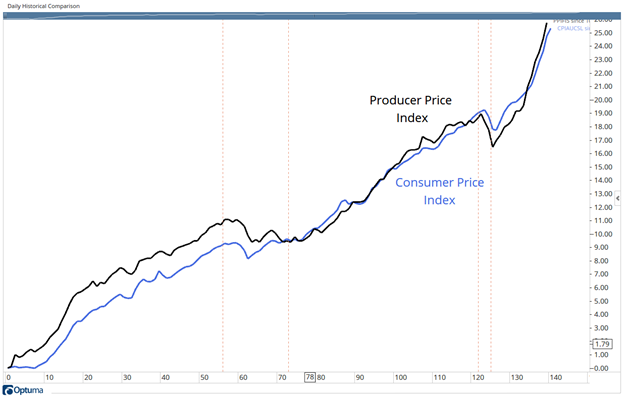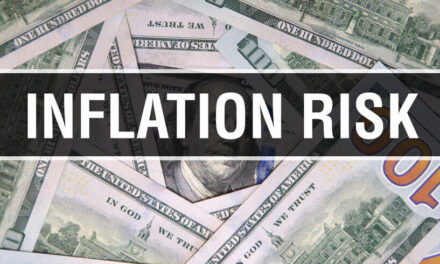Last week, the Bureau of Labor Statistics reported that the Consumer Price Index (CPI) posted a large year-over-year gain of 5.4% in July. But economists weren’t worried.
They noted that 5.4% was the same increase seen in June, which meant inflation wasn’t accelerating. They added that when food and energy are excluded, the CPI was up just 4.3% compared to last July. The energy index was up 23.8% over that time, while food prices rose 3.4%.
Economists don’t seem to understand that consumers like us have to spend money on food and energy. We aren’t able to exclude those items, so inflation is a growing concern for consumers.
Later in the week, we learned that the Producer Price Index (PPI) was up a record 7.8% compared to last July, surpassing the old record of a 7.3% gain set for the 12 months ending in June.
PPI is bad news for those expecting inflation to just go away. Experts note: “The PPI serves as a leading indicator for the CPI, so when producers face input inflation, the increases in their production costs are passed on to retailers and consumers.”
The chart below highlights this relationship. Dashed lines mark turning points in PPI. Peaks or troughs in CPI followed PPI by a few months.
PPI Indicates that CPI Will Continue to Rise

Source: Optuma.
Consumers Face CPI Increases Through 2021
This chart goes back to 2009. That’s the length of the PPI data series in the Fed’s database. It’s surprising so little data on PPI exists, but it does show that there is a relationship between producer prices and consumer prices — with producer prices leading consumer prices.
This relationship indicates that producers are generally successful in passing higher prices on to consumers. PPI for the last two months shows that consumers will face higher prices in the next few months.
Inflation may prove to be transitory, but consumers will face inflationary pressures through at least the end of the year.
I don’t like working more than I have to.
That’s why I found a way to beat the market by making one simple trade per week.
Last year, this trade helped me beat the market eight times over.
It’s a great way to accelerate your gains. Click here, and I’ll show you how it works.
Michael Carr is a Chartered Market Technician for Banyan Hill Publishing and the Editor of One Trade, Peak Velocity Trader and Precision Profits. He teaches technical analysis and quantitative technical analysis at the New York Institute of Finance. Mr. Carr is also the former editor of the CMT Association newsletter, Technically Speaking.
Follow him on Twitter @MichaelCarrGuru.





